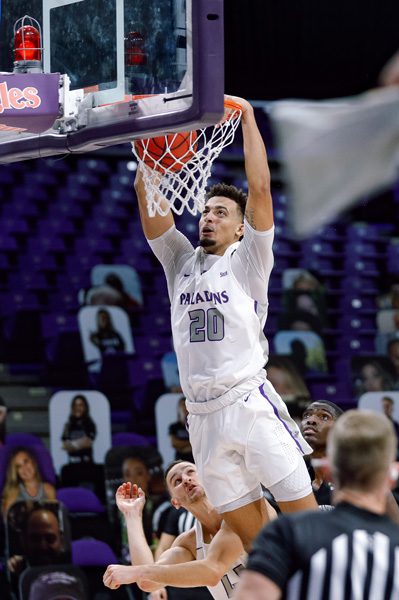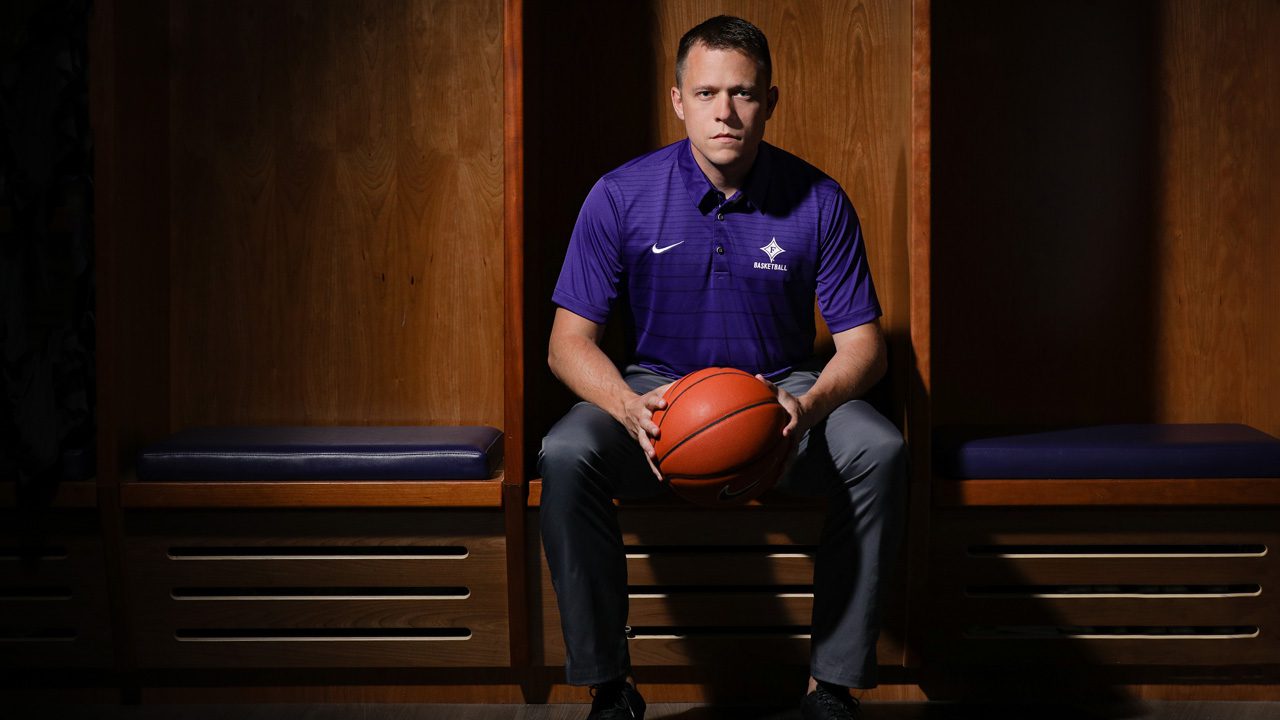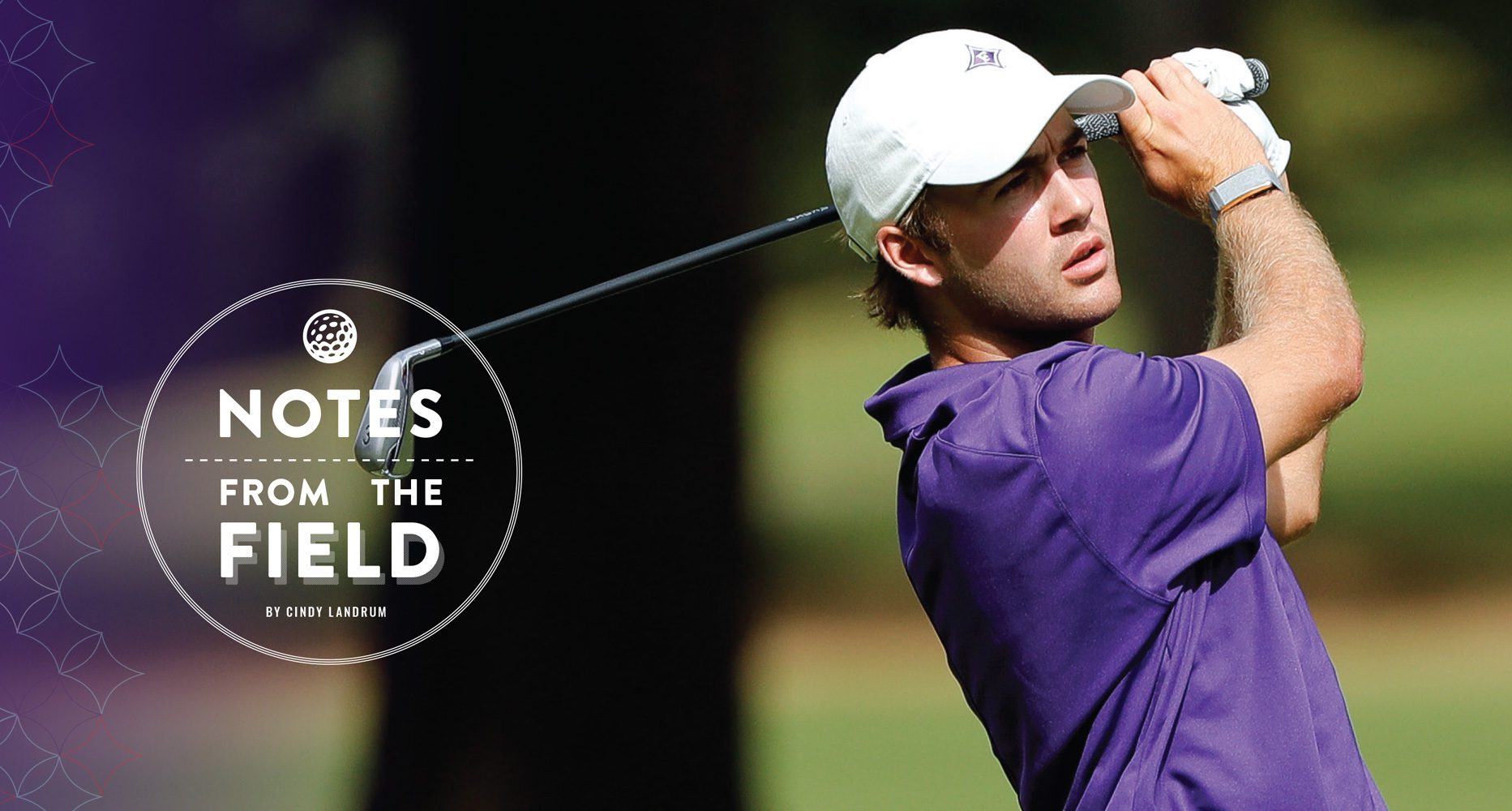
Notes from the Field
A Training Center to Attract the Best
By Cindy Landrum
The new facility “is exactly what a program of Furman’s caliber deserves,” says Cindy Davis ’84 of the Davis and Faxon Training Facility.
In the competitive world of collegiate golf, a stroke here or there can make the difference between being in the middle of the pack or on the leaderboard.
Furman’s golf alumni know this as well as anyone. And they’ve stepped forward – as they have for generations – to position current and future Paladin golfers for victory.

Rendering of the Davis and Faxon Training Facility
The latest example is a new two-phase expansion and renovation of the REK Center for Intercollegiate Golf, which includes the construction of the Davis and Faxon Training Facility. The state-of-the-art indoor golf training facility will have six hitting stations in three covered bays, an indoor putting studio, a club repair shop and a workout area. It gives Furman’s men’s and women’s golf programs facilities that rival the best in collegiate golf, and will help head coaches Jeff Hull and Matt Davidson ’04 attract elite golfers from across the country.“We have a great golf course, and our outdoor facility is amazing,” says Hull, who has been head coach of the women’s program since 2016. The one thing Furman was missing was an indoor facility. “Once we get it done,” says Hull, “with our existing facilities, we will be in a great position. It will definitely help the program from a recruiting standpoint.”
It takes more than great coaching
Donors have committed more than $800,000 for the two-phase project. Construction of the training center will be completed this summer. The indoor facility is named for former Paladin golfers and Furman Athletics Hall of Fame members Cindy Davis ’84 and Brad Faxon ’83, lead gift-givers to the campaign.
“It is exactly what a program of Furman’s caliber deserves,” says Davis, the former president of Nike Golf and vice president of the Ladies Professional Golf Association.
She says Beth Daniel ’78 and Betsy King ’77, members of the 1976 national championship team who became World Golf Hall of Fame members, inspired her to go to Furman.
“If you look at the student-athletes who have gone through the program since and what the program has accomplished – being ranked one of the best in the country and continuing the success 40 years later, it’s remarkable,” says Davis, runner-up in the National Championships in 1983.
Davis says the new indoor facility would give future Paladins access to the latest technology used to analyze all aspects of a golf swing and putting stroke.
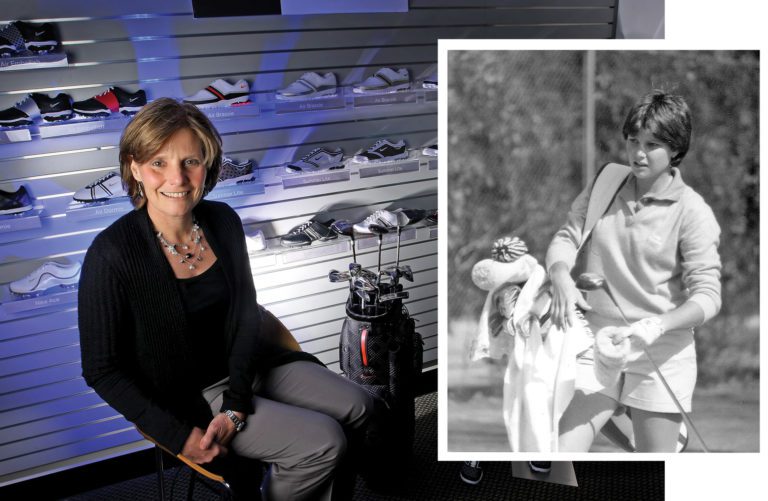
Cindy Davis ’84 at Nike World Headquarters and pictured (right) at Furman in the 1980s.
“I think it will enable both Jeff (Hull) and Matt (Davidson) to be better coaches because they’ll be able to use that data and translate it into practice plans for these golfers that focus on the areas where they can improve,” she says.
That’s especially important as college golf increasingly pits the impossibly good against one another.
“After last year, with one shot per round per player, we’re in the top five in the country,” Hull says. “Furman women’s program has been a top program since it started, decade after decade. There aren’t a lot of programs that can say they’ve had that kind of prolonged success.”
Once on the verge of extinction, the men’s program is working to return to the highest level of competition, says Faxon, who won the 1983 Haskins Award as the nation’s most outstanding male collegiate golfer. He went on to win eight PGA tournaments.
“On the men’s side, we haven’t had the same kind of consistency over a long time,” Faxon says. “That starts with coaching and recruiting, and I think that’s where Matt’s strength is going to be. But I don’t care how good a coach or recruiter you are. You will not get great players there without having a great facility.”
Furman’s golf course ranks in Golfweek’s Top 30 best campus courses. The REK Center for Intercollegiate Golf, which opened in 1997, serves as the clubhouse and practice facility for both programs, featuring putting and chipping greens and fairway and greenside bunkers that give Paladin players multiple short-game practice possibilities.
It’s a far cry from what was here when Faxon played for the Paladins.
“There was a pro shop open to the membership and the public, and we had one side of the driving range to hit balls – and poor balls at that,” he says.
Davidson says the new indoor training center will facilitate player development.
“Our students will use the facility year-round,” he says, “and that will help them reach their potential.”
Phase Two of the project includes a renovation of office suites and locker rooms for both programs and a new Frank Keener Team Meeting Room, which will include study space and a kitchen for student-athletes.
Graphics and branding in the new state-of-the-art facility will appeal to today’s student-athletes, while honoring Furman’s golf legacy, including the achievements of Davis and Faxon, Dottie Pepper ’87, Daniel and King. Jack Porter, a Greenville-based design firm specializing in experiential branding for college athletics owned by former Paladin golfer Christina Harrell ’98, is working on the branding.
They aren’t the only alumni devoted to Furman golf.
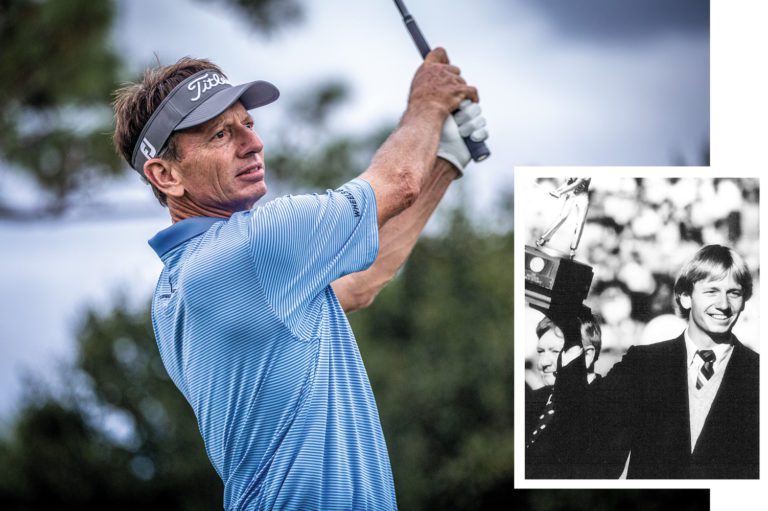
Brad Faxon ’83 at Old Palm Golf Club in recent years and (right) holding the Fred Haskins Award, which he won in 1983.
Last fall, Mike Hogan ’72 and his wife, Sondra, pledged an estate gift of $500,000 to the Furman men’s golf scholarship endowment, bringing the program closer to being fully funded. Hogan, who played from the 1969 to 1972 seasons, was part of a group of former Paladins who rallied together to endow scholarships for the team in 2014. Since then, they have raised more than $2.7 million in commitments for the endowment, which at current market value funds about 1.7 scholarships.
‘How you approach things in life’
Judy Keener says her gift was a way to celebrate how important the game of golf was to her late husband, Frank O. Keener ’64, and the opportunity it has given her both personally and professionally. Frank Keener captained the Furman golf team in his junior and senior seasons.
“The game itself is not just about golf,” says Keener, who calls herself “worse than your average golfer.”
“It’s about personality and how you approach things in life. You learn a lot about people on the golf course, and you learn a lot about yourself.”
That was true for Davis and Faxon. And both say Furman contributed to far more than their development as golfers.
“I can reflect on my four years at Furman and point to how it shaped me,” says Davis. “The demands of Furman as an educational institution and the demands of playing in one of the best women’s college golf programs in the country taught me things I’ve taken with me beyond my career at Furman.”
The lessons extend across her entire life.
“I learned how to work hard, how to have discipline, how to be accountable and committed, how to play on a team, how to win humbly, how to lose gracefully,” she says.
“Furman had such a significant impact on me – It shaped my life, and it’s so important we create opportunities for others.”
